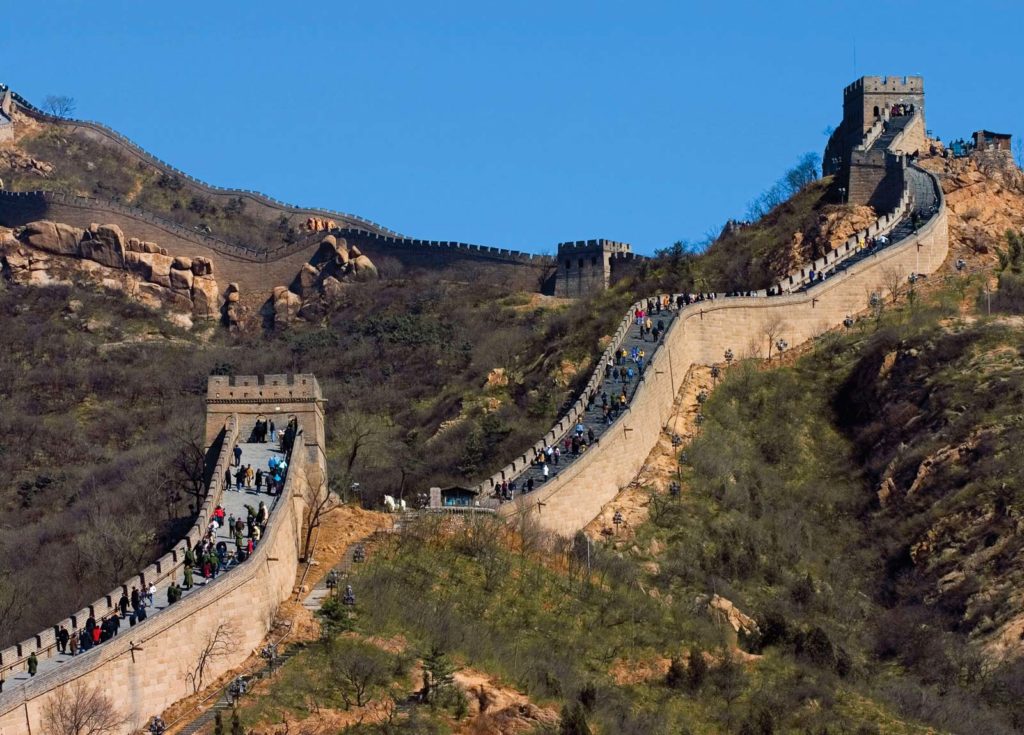Great Wall of China

The Great Wall of China is one of the world’s iconic attractions, and there is little that can be said about the Great Wall that has not been stated over and over again throughout the wall’s more than 2,000 -year history. Construction of the Great Wall started in 221 BC to defend the Middle Kingdom from Mongol soldiers. But many of the sections were already in place, built by a series of independent kingdoms stretched across the land, from Shanhaiguan on the east coast to Jiayuguan in the Gobi Desert—Emperor Qin Shihuang merely oversaw the joining of these walls.
The first chapter in the history of the Great Wall of China ended in 207 BC, when the last of the over 6 billion cubic feet of compacted earth was set into place. The Great Wall was only moderately effective in carrying out its purpose, even after it was faced with bricks and stones. Its real value came in the way it eased transportation throughout the land, acting as a kind of elevated thruway, equipment, goods and passengers could more easily traverse the arduous mountainous wilderness that enveloped the Great Wall.
As strange as it seems now, before a Great Wall of China tour was a prerequisite on any trip to the country, many of the sections fell into disrepair as time passed and the import of the towering structure lessened as marauding nomads dispersed into the annals of time. The history of the Great Wall of China, and its return to significance was actually the work of the tourist industry – now there are plenty of popular sites where the day tripper can behold one of the most famous landmarks in the world.
Badaling, Mutianyu, and Simatai are the most popular spots to being a Great Wall of China tour. The closest to Beijing, where most travelers are approaching from is Badaling, about 40 miles northwest of the capital. Here is certainly the most popular spot for tour guides and those giving the Great Wall a cursory glance. Here you will find a glut of souvenir shops, cheesy restaurants and any number of other tourist traps, but for those who want to keep their transportation simple and convenient, this is the best place to learn the history of the Great Wall of China – the Great Wall Museum is also here.
Mutianyu is not much better. Over 50 miles from Beijing, you will find a similar tourist-driven atmosphere at Mutianyu, though the wall is far more complex than in Badaling, as you will find a number of fascinating guard towers and some of the best views along any section of the wall.
Experienced travelers know that near the small town of Gubeikou, the remains at Simatai are one of the best places to get an unfettered and more authentic look at the Great Wall of China. Watchtowers line the walls, haphazardly winging their way across the landscape. The only problem with Simatai is that it is a much more rigorous hike to view the Wall – the terrain ranges from sharp inclines to steep dropoffs almost without warning, so it is certainly not for the beginning hiker. But those that make the trip to Simatai are sure to be rewarded with the best views in all of China..
Of course, there are plenty of different places to start your own Great Wall of China tour. Other significant places are Juyong Pass and Jinshanling and Huanghua, the last one long considered to be the best preserved section of the wall in the vicinity of Beijing.